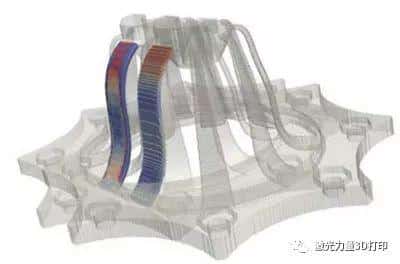There was once a graduate tutor in the direction of 3D printing that "encouraged" his disciples. You must do metal printing. What do you do to graduate in SLA? !
Not to mention here how brilliant and promising metal printing is, at least it is valued by people.
Dragging the blessings of the 3D printing exhibition in Frankfurt, there has been good news in the 3D printing industry recently, and metal printing is even worse. ANSYS acquisition of 3D SIM is one of them. Why do you have to take this news out and talk about it, because domestically you can't make this kind of software, so what kind of software is it?
In the field of additive manufacturing, the "deepest water" should be metal printing. The metal powder is transformed from solid to liquid to form our common metal. "Experienced too much". This process may lead to its poor density and poor performance. , There may also be huge energy stored in it-stress! In recent years, domestic shape control has been mentioned many times. However, until now, there are so many businesses who can only control their shape and not their properties, because the molding process has not been thoroughly studied. Researchers on the prediction of defects, stress, deformation and even performance in the metal printing process have never stopped expecting, and the country has never stopped investing. However, we are still in awe of the challenge of additive manufacturing simulation software. The author believes that it is indeed too complicated, but Europe and the United States have indeed made it.
Researchers are familiar with ANSYS, as long as they are in science and engineering, no matter what topics they are engaged in during their studies, most of them understand ANSYS, but now it has acquired the technical leader of metal printing simulation, which on the one hand indicates additive manufacturing. Finally, a software recognized by most people is used for research. On the other hand, it also represents that metal printing simulation has predicted that printing performance has developed to a certain extent.
Rich physical and chemical changes have occurred in the process of metal powder and laser. Each powder material is different from the effect of laser because of the difference in composition. The phenomenon displayed in the printing process is more invariable, and the processing of parts of different shapes is more integrated. Different kinds of crafts. One layer of powder metal is heated and cooled. When the next layer is deposited, it is heated again to "weld" the two layers of powder together to form a solid; when the part is completed, each layer undergoes multiple thermal cycles and is generated in the part Residual Stress. Uneven powder distribution or tiny microstructural defects due to thermal expansion / contraction cycles. At the macro level, depending on the complexity of the part, additional strain may occur due to the overall shape and support structure of the part. Any of these situations and more potential situations may cause the build to fail. Failure to build may include deformation of the part, causing the part to exceed tolerances or break.
Engineering simulation can solve these problems in advance, by predicting the construction process effect and result attributes of AM manufacturing components. The 3D design can then be modified to eliminate the problem of prediction and to ensure that the structurally sound part is successfully constructed. 3D SIM's products include the easy-to-use tool exaSIM developed specifically for machine operators and designers to design additive manufacturing components. exaSIM provides unprecedented prediction capabilities that can detect and resolve residual stresses, distortions, and construction failures to help users achieve component tolerances and avoid construction failures without physical testing. Another product, FLEX, helps engineers, analysts, and researchers adjust the optimal process parameters for specific additive manufacturing machinery and material combinations. This enables the highest level of component integrity and predicts the microstructure and related properties before manufacturing the component. This acquisition gives ANSYS the only complete additive manufacturing (3D printing) simulation workflow in the industry.
ANSYS additive manufacturing simulation solution:
Set machine process parameters to ensure the success of support and physical printing;
Define attributes for a given machine and material;
The additive manufacturing process needs to be simulated and predicted in advance.
Research, evaluate and optimize the microstructure of materials.
The addition of 3D SIM to ANSYS is just the beginning, and heralds that foreign technology will have a more profound development, and domestic researchers should work harder.
Further reading: Application of numerical simulation in SLM forming process
Welcome attention
٩ (๑❛ᴗ❛๑) ۶
The original text originated from the WeChat public account (FacFox): Why should the process of metal powder and laser be simulated


